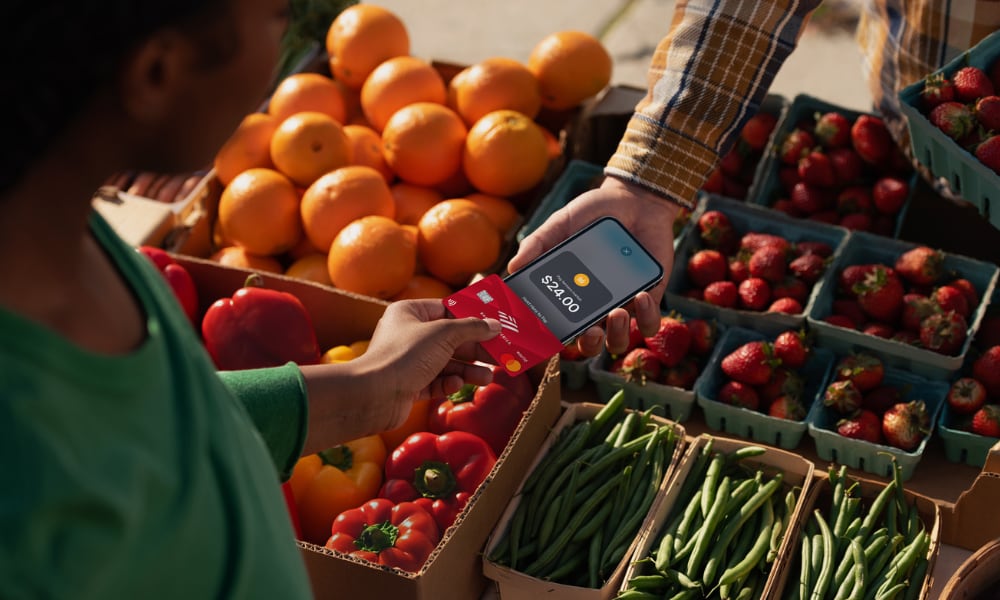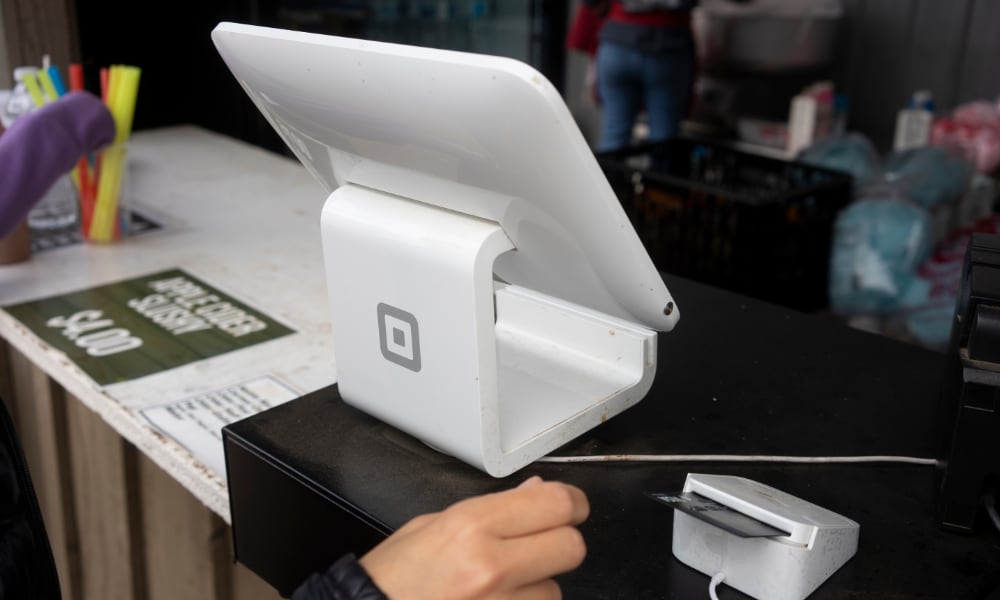Major Partners Come Aboard as Apple’s New ‘Tap to Pay’ Gets Closer to Launch
 Credit: Apple
Credit: Apple
Toggle Dark Mode
In February, Apple officially announced Tap to Pay on iPhone; a new mobile payments feature that will soon allow businesses to use an iPhone as a payment terminal without requiring any additional hardware.
Many small businesses and kiosk-style retailers have already been using the iPhone to accept payments for years with accessories and apps such as Square. Now, Apple wants to get a piece of that lucrative market while making it easier for businesses to accept mobile payments.
While it’s still not clear when Tap to Pay on iPhone will actually launch, Apple has been laying the groundwork for it since at least the second beta of iOS 15.4, and there’s some evidence things are ramping up in the first iOS 15.5 beta released this week.
Apple also has two of the biggest payment and e-commerce providers on board as launch partners — Stripe and Shopify — but it doesn’t look like it’s stopping there.
Global financial technology platform Adyen has just announced that it also plans to support Apple’s new Tap to Pay feature.
The company is already taking expressions of interest from enterprise customers and commerce platforms that want to integrate Apple’s technology into their current payment systems.
Why Does This Matter?
Unlike Stripe and Shopify, most consumers have probably never heard of Adyen. However, that’s simply because it’s one of those companies that operate quietly behind the scenes to power many of the big e-commerce platforms that the rest of us regularly use. That includes such prominent names as Facebook, Uber, H&M, eBay, and Microsoft.
This partnership is especially significant because it will take Apple’s Tap to Pay on iPhone beyond small businesses and into many big-box retail chains.
As Adyen’s Chief Operating Officer, Kamran Zaki, explains, its goal is to help businesses offer “even better in-person experiences” by allowing their employees to accept payments anywhere.
In-person payments are evolving and customers are asking for a reliable, affordable, and easy to scale mobile payment solution with a simplified integration, so it made sense to offer Tap to Pay on iPhone to our customers. With many businesses increasingly equipping their employees with iPhones to better serve their shoppers, this product will further streamline the checkout processes for shoppers.Kamran Zaki, COO, Adyen
It’s an experience that should be familiar to anybody who has ever visited an Apple Store, where the tech giant abolished traditional checkout counters over a decade ago. Adyen envisions Tap to Pay on iPhone bringing that same experience to many more retailers, and it’s ready to help make that dream a reality.
Adyen is already working with Lightspeed Commerce and NewStore, the latter of which is planning to pilot Tap to Pay on iPhone with Vince — a luxury apparel and accessories brand based out of California that operates 48 retail stores and 15 outlet stores across the United States.
Adyen has been at the forefront of innovation with NewStore since our inception. Together, we have already put iPhones in the hands of thousands of store associates. Now, these devices can become payment terminals with no additional hardware. By bringing Tap to Pay on iPhone to our growing list of shared customers, NewStore and Adyen will provide a more convenient, seamless, and secure payment experience for both associates and consumers.Stephan Schambach, Founder and CEO, NewStore
About Tap to Pay on iPhone
Tap to Pay on iPhone will allow any iPhone XS or later to be used as a contactless mobile payment terminal for accepting credit and debit card payments — either with physical contactless cards, Apple Pay, or other mobile wallets such as Google Pay.
However, although Apple is building Tap to Pay for iPhone into iOS, it’s only laying the foundation for it; third-party developers will need to build apps that will actually make use of it. That’s where companies like Adyen, Lightspeed Commerce, and NewStore come in. It’s also precisely why Apple has already announced the new technology — so that payment providers, e-commerce companies, and their related developers can get ready.
Once Tap to Pay on iPhone goes live, customers will be able to tap a physical card or an Apple Pay device against a retailer’s iPhone in the same way they would when using a traditional contactless payment terminal.
As the name implies, Tap to Pay on iPhone will be exclusive to the iPhone. Even though many retailers use iPads as point-of-sale terminals, Apple hasn’t announced any plans to bring this capability to the iPad. This is understandable since no iPad includes the NFC hardware necessary to power a feature like this.
However, the goal of Tap to Pay on iPhone also appears to be more focused on powering mobile payments on the go, not so much on replacing NFC payment accessories like the Square Reader.
When’s It Coming?
Other than the usual vague “later this year,” Apple hasn’t provided a specific timeline for when Tap to Pay on iPhone will launch. It’s a safe bet that we’ll see it by the time iOS 16 arrives this fall, but it’s also possible Apple could launch it sooner — perhaps as a more limited “beta” rollout.
With so many payment providers already hard at work integrating the new technology, and much of the groundwork already being laid in iOS 15.5, it certainly seems like the technology will be ready to go very soon.
Apple has also shown us in the past that not every new feature needs to wait for a major iOS release; Apple surprised us with Car Key in iOS 13.6, and Apple Music came along in iOS 8.4 — only two months before iOS 9 was expected to arrive.
Features based on under-the-hood APIs like this have often arrived in point releases. This includes not only Car Key but also AirTags (iOS 14.5), the MagSafe Battery Pack (iOS 14.7), COVID-19 Exposure Notifications (iOS 13.5), and Apple Pay Cash (iOS 11.2), to name just a few.









